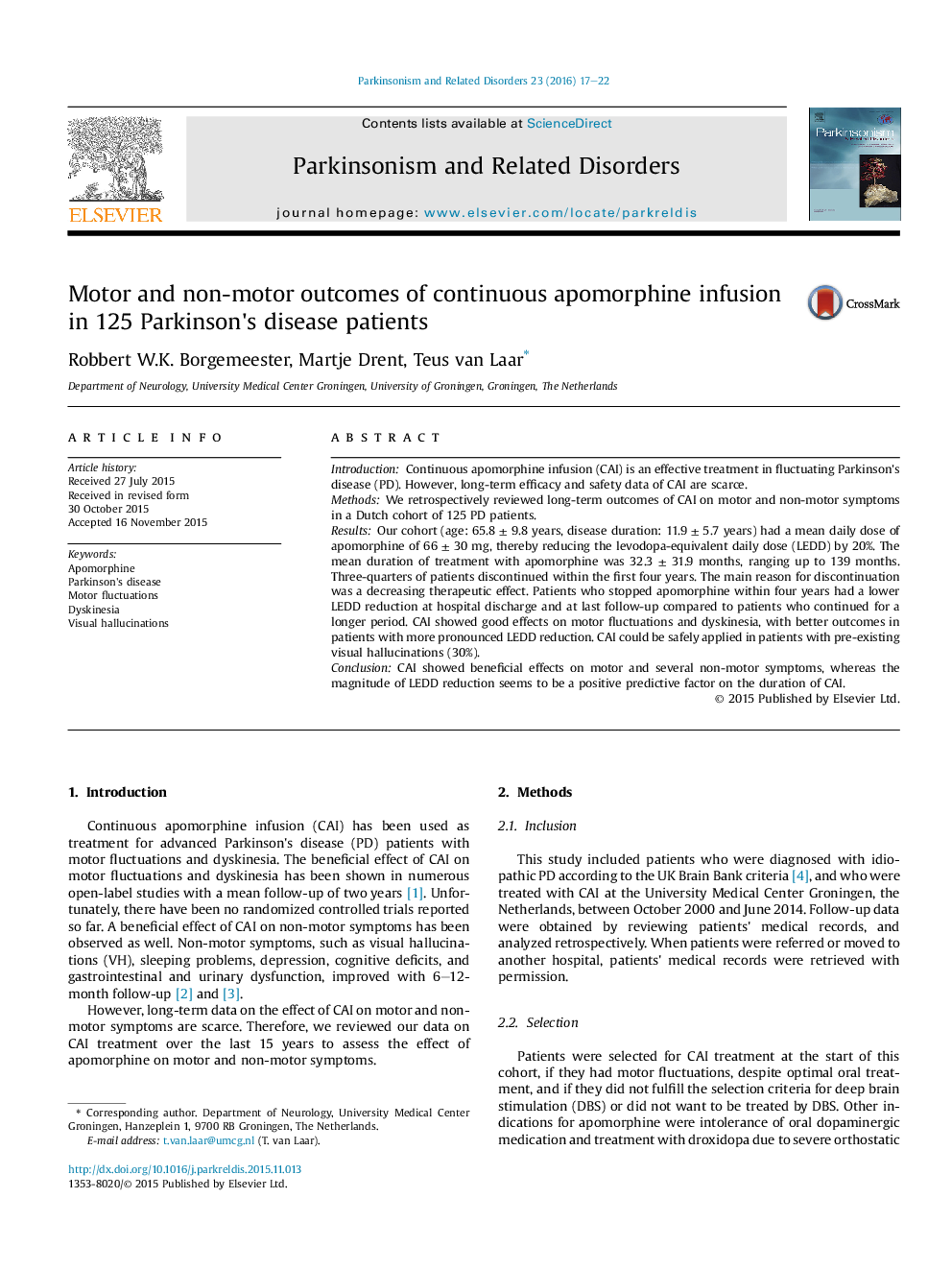| Article ID | Journal | Published Year | Pages | File Type |
|---|---|---|---|---|
| 1920365 | Parkinsonism & Related Disorders | 2016 | 6 Pages |
•This is a retrospective analysis on apomorphine in a large Dutch cohort.•Long-term outcomes of apomorphine on motor and non-motor symptoms were reviewed.•The efficacy on motor symptoms seems to be directly related to LEDD reduction.•Apomorphine can be prescribed safely to PD patients with pre-existing visual hallucinations.•Apomorphine seems to improve nighttime sleeping problems.
IntroductionContinuous apomorphine infusion (CAI) is an effective treatment in fluctuating Parkinson's disease (PD). However, long-term efficacy and safety data of CAI are scarce.MethodsWe retrospectively reviewed long-term outcomes of CAI on motor and non-motor symptoms in a Dutch cohort of 125 PD patients.ResultsOur cohort (age: 65.8 ± 9.8 years, disease duration: 11.9 ± 5.7 years) had a mean daily dose of apomorphine of 66 ± 30 mg, thereby reducing the levodopa-equivalent daily dose (LEDD) by 20%. The mean duration of treatment with apomorphine was 32.3 ± 31.9 months, ranging up to 139 months. Three-quarters of patients discontinued within the first four years. The main reason for discontinuation was a decreasing therapeutic effect. Patients who stopped apomorphine within four years had a lower LEDD reduction at hospital discharge and at last follow-up compared to patients who continued for a longer period. CAI showed good effects on motor fluctuations and dyskinesia, with better outcomes in patients with more pronounced LEDD reduction. CAI could be safely applied in patients with pre-existing visual hallucinations (30%).ConclusionCAI showed beneficial effects on motor and several non-motor symptoms, whereas the magnitude of LEDD reduction seems to be a positive predictive factor on the duration of CAI.
